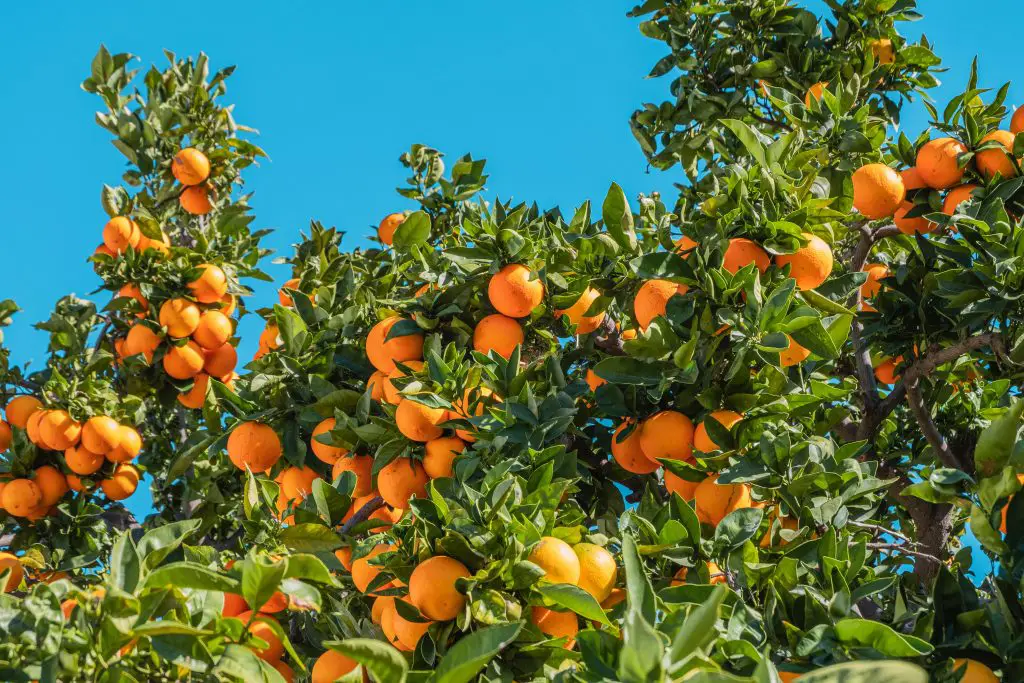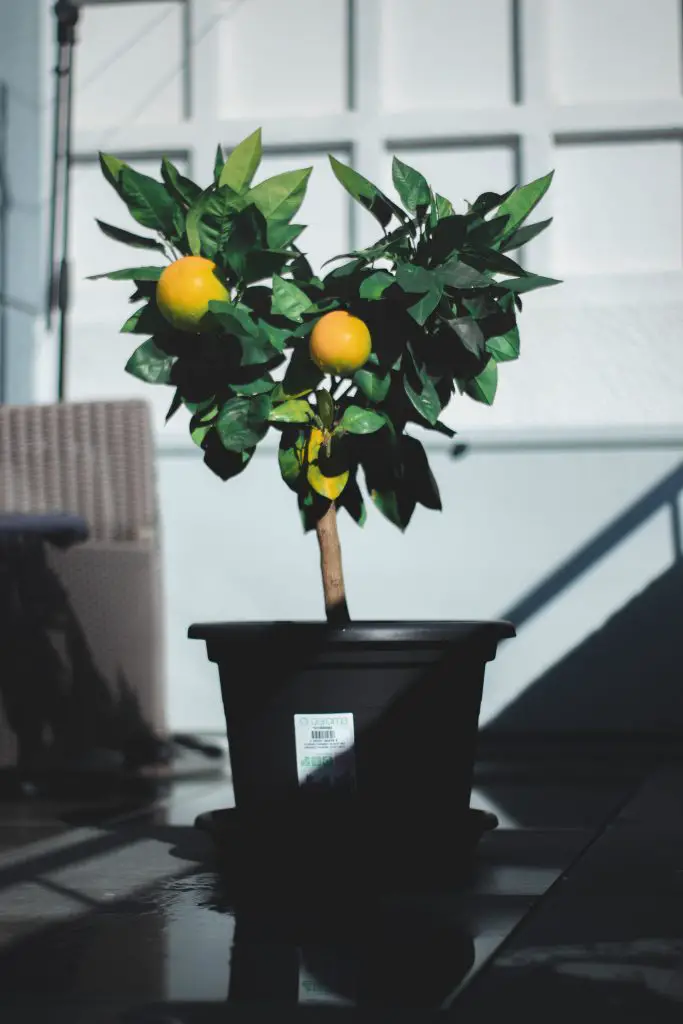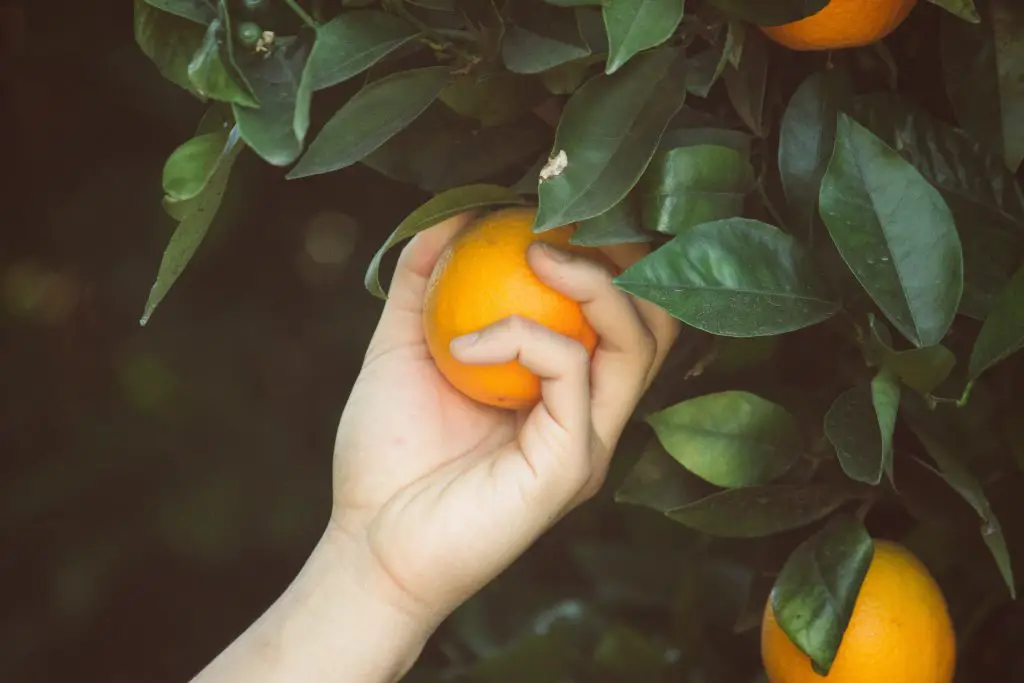How Much Fruit Does A Dwarf Orange Tree Produce? Oranges are one of the most popular fruits available at the grocery store, ranking fifth in purchase frequency among US shoppers according to the Produce Marketing Association.
So if you are thinking of growing fruit in your yard Oranges should be first on the list. However, when purchasing Orange trees from the local garden center they tend to be sold on dwarfing rootstock to ensure the tree does not get too large. So how much does a Dwarf Orange tree produce?
According to a study by the University of Florida, a mature Dwarfing Orange tree will typically produce around 88 lbs (40 kg) of fruit in a season which equates to around 160 to 200 fruit in a season, though this can vary with the specific variety and rootstock used. A newly planted tree will take around 2 to 3 years to produce its first harvest and around 8 to 10 years to reach maturity.
A major reason to include an Orange tree in your home orchard is that it is one of the earliest fruiting trees in the season. The fruit is ready to harvest in mid-Spring and Oranges can stay on the tree for up to six months. If Oranges become overripe they will soften and eventually fall off the tree.
This is extremely advantageous to a home gardener as it can extend the time in which fresh fruit is available from a home orchard to 9 to 10 months of the year in those regions in which an Orange Tree can be grown. Unfortunately, Orange trees are not very tolerant of cold conditions and are only suitable for zones 9 to 11.

How To Grow Orange Trees
Orange trees are generally easy to grow if you live in a region where there are not heavy frosts or snowfall. When planting a tree the first consideration is the location, Oranges trees need a location with at least 6 hours of direct sun per day however more is preferable. If the tree does not get sufficient sunlight it will fail to set fruit. Additionally, it is best to avoid positions that are exposed to strong wind as this can stress trees and disrupt the pollination process in some cases.
The second consideration is the soil conditions, Orange trees prefer a deep, well-drained, sandy loam soil with plenty of organic matter and a pH between 6.0 to 7.0. To measure the pH of the soil accurately we recommend that a pH meter be used rather than a pH kit with indicator strips. The main reason for this is the meter is cheaper to buy and generally easier to use, click here to see the latest prices on Amazon.
To adjust the pH of the soil lime may be added to increase the pH if it is too acidic or sulfur can be added if the pH of your soil is too high. However, it is important to note that these chemicals should be well mixed into the soil, and in the case of sulfur, the effect on pH may take some months to appear.
If you live in an area with a heavy clay based soil, the soil will also need to be modified. Orange trees will not tolerate poorly drained soils because it can cause the roots to rot. To improve heavy soils it is necessary to incorporate large amounts of compost and also a few buckets of gypsum into the soil. When altering the soil it is also important to modify the soil within 3 ft of where the tree is to be planted as changing soil only at the point where the tree is to be planted will still likely result in the soil remaining quite wet.

Additionally, it may also worth raising the plant above the soil level by planting into an elevated mound as this will aid drainage.
When planting a tree the best time is in Spring once any chance of a severe frost has passed. The reason for this is that it provides an opportunity for the tree to become established before the heat of summer arrives.
Start by digging a planting hole approximately twice the width and depth of the container the tree came in and plant it at the same depth as it is in the current pot. At this stage do not put any fertilizer at the base of the planting hole as this can burn sensitive roots. When removing the tree from its container it is advisable to lightly tease roots as this will help them penetrate the surrounding soil more quickly.
If the tree has become pot bound it may be necessary to cut any large roots that have begun to spiral around the base of the pot. The cutting or breaking of these large roots will encourage new root growth.
Once the roots have been teased out place the rootball in position and then backfill the hole with soil, gently pressing down around the rootball to ensure the soil is firm and there are no air pockets.
Water the tree thoroughly and then cover the soil with a 4 inch (10 cm) layer of mulch to conserve moisture. But when doing this avoid having the mulch touch the trunk of the tree as this can cause collar rot.
In the first growing season, the trees need to be watered regularly at least once a week to ensure it remains moist. Young trees are particularly susceptible to a lack of water as the root system is yet to become fully established. However, once the plant has become established watering can be done less frequently, a deep watering every two to three weeks is usually sufficient.

As Orange trees require a lot of nutrients it is best to apply a well-balanced organic citrus food every 2 to 3 months in the growing season. Spread the fertilizer evenly around the drip zone of the tree and water it in well.
In terms of pruning, there is no specific pruning regime that needs to be implemented unless your have espaliered the tree. To read more about pruning techniques for espalier Orange tree click here.
In general, regular pruning is only required to remove dead and diseased wood. The most common disease is gall wasp which creates lumps along the branches and needs to be cut out every year. It is best to do the prune in Autumn as it will reduce the chances of it interfering with next year’s harvest.
Harvesting Fruit
The fruit will typically be ready to harvest in early to mid-spring, at this point the fruit will have developed fully in colour and flavour. However, it is advisable when picking the first fruit of the season to cut the fruit open and try it for flavour as the outward appearance of the fruit will develop long before the fruit is fully ripe.
If they are not fully ripe the fruit will lack the sweetness that is associated with Oranges and will need to be left on the tree for longer. Once the fruit is ripe they can be left on the tree for a few months, but they will eventually deteriorate if they are left on for too long.
When removing fruit from the tree twist the fruit to avoid damaging the branches. Once picked the fruit will store for several weeks in the fridge if the fruit is not damaged or bruised.
